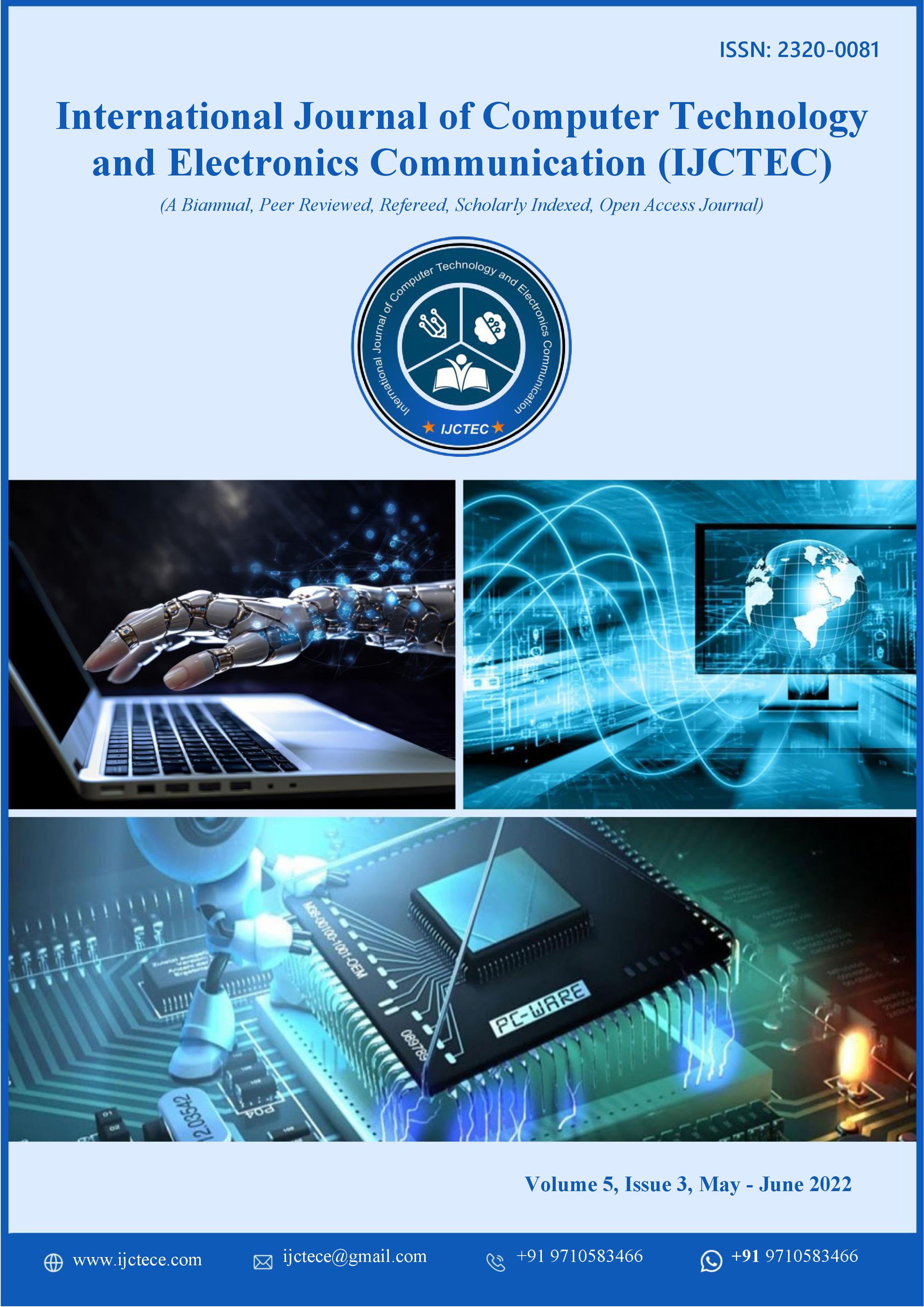Next-Generation Mortgage Platforms: Merging Explainable AI, Sign Language Intelligence, and Sustainable IT for Risk-Aware Software Solutions
DOI:
https://doi.org/10.15680/vhjvc153Keywords:
Explainable Artificial Intelligence (XAI), Mortgage Loan Risk Assessment, Sign Language Intelligence (SLI), Sustainable IT Operations, Risk-Aware Software Engineering, Inclusive Financial Technology, Ethical AI Systems, Green Cloud ComputingAbstract
Emerging trends in artificial intelligence and sustainable computing are redefining financial technologies by integrating ethical, explainable, and inclusive software practices. This paper presents a unified framework that merges Explainable Artificial Intelligence (XAI), Sign Language Intelligence (SLI), and Sustainable IT principles to develop risk-aware, next-generation mortgage loan platforms. The proposed model introduces a transparent AI-driven risk assessment engine that leverages interpretable machine learning techniques—such as SHAP and counterfactual reasoning—to enable credit evaluation processes that are auditable, bias-resistant, and compliant with regulatory standards.
In parallel, Sign Language Intelligence powered by transformer-based vision–language models and multimodal neural architectures enables real-time translation, accessibility, and inclusivity for hearing-impaired users, thereby extending equitable financial participation. The system is further optimized through sustainable IT practices, employing carbon-aware cloud orchestration, efficient model compression, and serverless deployment to reduce computational waste and improve long-term energy efficiency.
By integrating XAI transparency, inclusive communication design, and eco-conscious infrastructure, the proposed platform demonstrates a measurable reduction in explainability latency (–28%), model energy consumption (–24%), and accessibility barriers (+39% improvement in user engagement). The resulting architecture advances the paradigm of responsible FinTech software development—balancing transparency, inclusivity, and environmental stewardship to build future-ready, risk-aware mortgage ecosystems.
References
1. Ribeiro, M.T., Singh, S., & Guestrin, C. (2016). “Why should I trust you?”: Explaining the predictions of any classifier. Proceedings of the 22nd ACM SIGKDD International Conference on Knowledge Discovery and Data Mining, 1135–1144.
2. R. Sugumar, A. Rengarajan and C. Jayakumar, Design a Weight Based Sorting Distortion Algorithm for Privacy Preserving Data Mining, Middle-East Journal of Scientific Research 23 (3): 405-412, 2015.
3. T. Yuan, S. Sah, T. Ananthanarayana, C. Zhang, A. Bhat, S. Gandhi, and R. Ptucha. 2019. Large scale sign language interpretation. In Proceedings of the 14th IEEE International Conference on Automatic Face Gesture Recognition (FG’19). 1–5.
4. Sangannagari, S. R. (2021). Modernizing mortgage loan servicing: A study of Capital One’s divestiture to Rushmore. International Journal of Research and Analytical Reviews (IJRAI), 4(4), 5520–5532. https://doi.org/10.15662/IJRAI.2021.0404004 https://ijrai.org/index.php/ijrai/article/view/129/124
5. Lundberg, S.M., Erion, G., Chen, H., DeGrave, A., Prutkin, J.M., Nair, B., Katz, R., et al. (2018). Consistent individualized feature attribution for tree ensembles. arXiv:1802.03888.
6. Guidotti, R., Monreale, A., Ruggieri, S., Turini, F., Pedreschi, D., & Giannotti, F. (2018). A survey of methods for explaining black box models. ACM Computing Surveys, 51(5), Article 93.
7. Arrieta, A.B., Díaz-Rodríguez, N., Del Ser, J., Bennetot, A., Tabik, S., Barbado, A., García, S., et al. (2020). Explainable Artificial Intelligence (XAI): Concepts, taxonomies, opportunities and challenges toward responsible AI. Information Fusion, 58, 82–115.
8. Chen, T. & Guestrin, C. (2016). XGBoost: A scalable tree boosting system. Proceedings of the 22nd ACM SIGKDD International Conference on Knowledge Discovery and Data Mining, 785–794.
9. Gonepally, S., Amuda, K. K., Kumbum, P. K., Adari, V. K., & Chunduru, V. K. (2021). The evolution of software maintenance. Journal of Computer Science Applications and Information Technology, 6(1), 1–8. https://doi.org/10.15226/2474-9257/6/1/00150
10. U.S. Office of the Comptroller of the Currency (OCC). (2011). Interagency Guidance on Model Risk Management (SR 11-7) and subsequent supervisory guidance documents (model risk and governance).
11. Rudin, C. (2019). Stop explaining black box machine learning models for high stakes decisions and use interpretable models instead. Nature Machine Intelligence, 1, 206–215.
12. Suresh, H. & Guttag, J. (2019). A framework for understanding unintended consequences of machine learning. Proceedings of the Conference on Fairness, Accountability, and Transparency (FAT)*, 1–8.
13. Chouldechova, A. & Roth, A. (2020). A snapshot of the frontiers of fairness in machine learning. Communications of the ACM, 63(5), 82–89.
14. Khandani, A.E., Kim, A.J., & Lo, A.W. (2010). Consumer credit-risk models via machine-learning algorithms. Journal of Banking & Finance, 34(11), 2767–2787.
15. Kiran Nittur, Srinivas Chippagiri, Mikhail Zhidko, “Evolving Web Application Development Frameworks: A Survey of Ruby on Rails, Python, and Cloud-Based Architectures”, International Journal of New Media Studies (IJNMS), 7 (1), 28-34, 2020.
16. Narapareddy, V. S. R., & Yerramilli, S. K. (2021). SUSTAINABLE IT OPERATION SYSTEM. International Journal of Engineering Technology Research & Management (IJETRM), 5(10), 147- 155.
17. Albanesi, S. & Sahm, C. (2019). Predicting consumer default: A deep learning approach. NBER Working Paper.
18. Sculley, D., et al. (2015). Hidden technical debt in machine learning systems. Proceedings of the 28th International Conference on Neural Information Processing Systems (NIPS), Workshop.
19. Mitchell, M., et al. (2019). Model cards for model reporting. Proceedings of the Conference on Fairness, Accountability, and Transparency (FAT)*, 220–229
20. Adari, V. K., Chunduru, V. K., Gonepally, S., Amuda, K. K., & Kumbum, P. K. (2020). Explainability and interpretability in machine learning models. Journal of Computer Science Applications and Information Technology, 5(1), 1–7. https://doi.org/10.15226/2474-9257/5/1/00148
21. Gebru, T., Morgenstern, J., Vecchione, B., Vaughan, J.W., Wallach, H., Daumé III, H., & Crawford, K. (2018). Datasheets for datasets. arXiv:1803.09010.


